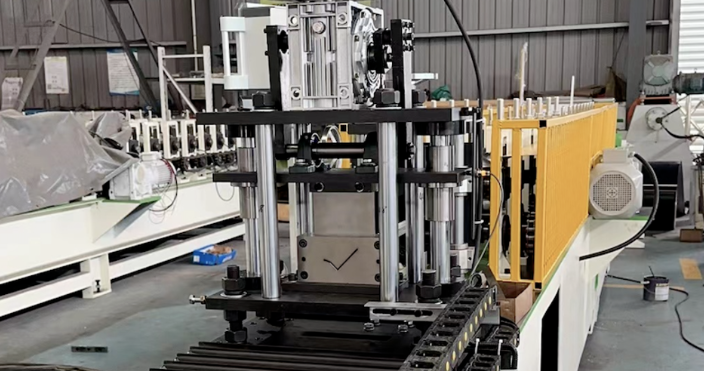
Posted on Tuesday, September 3, 2024
Apron flashing roll forming machines play a vital role in modern industrial applications, especially in construction and roofing industries. This guide explores every detail of these machines, from their specifications to their applications, pricing, and maintenance.
Apron flashing roll forming machines are designed to produce high-quality apron flashing profiles used in roofing systems. These machines provide precision, efficiency, and durability, making them indispensable in the construction industry. Their versatility allows them to meet the demands of various markets, ensuring accurate, cost-effective production.
Roller Materials
Punching and Notching
Servo Motors
Hydraulic Cutting Systems
Frame Size and Motors
PLC System
Machine Speed
Safety Guards and Enclosures
Materials
Sizes
Material Gauge
Market Size and Industry Use
Popular Countries
Pricing varies based on machine configurations and included extras:
Setup Process
Installation Tips
Q: What industries benefit most from apron flashing roll forming machines? A: Primarily the construction and roofing industries, particularly in residential, commercial, and industrial sectors.
Q: How do I choose the right specifications for my needs? A: Consider your production volume, material type, and profile requirements. Consult with the manufacturer for tailored solutions.
Q: What is the average setup time for this machine? A: Typically, it takes 1-2 days, depending on the complexity and site preparation.
Q: How often should maintenance be performed? A: Basic maintenance should be done weekly, with a comprehensive check every 6-12 months.
Apron flashing roll forming machines are a cornerstone of efficient and high-quality roofing profile production. Their versatility, precision, and scalability make them an excellent investment for businesses in the construction and roofing sectors.

Most Popular Roll Forming Machines in the United Kingdom
Posted on Thursday, December 11, 2025
This blog breaks down the five most in-demand roll forming machines in the UK

Can I Finance a Roll Forming Machine?
Posted on Thursday, December 11, 2025
Financing a roll forming machine is easier than most buyers think. Here’s how leases, loans, and payment plans make production affordable.

Roll Forming Machines for Sale in the UK: What Buyers Need to Know Before Purchasing
Posted on Thursday, December 11, 2025
This complete guide explains everything UK buyers must know before purchasing, including machine types, voltage requirements, CE/UKCA compliance

Roll Forming Machines for Sale in the USA: What Buyers Need to Know Before Purchasing
Posted on Wednesday, December 10, 2025
This guide explains everything U.S. buyers need to know before purchasing a roll forming machine, including machine types, pricing, voltage
Copyright 2025 © Machine Matcher.